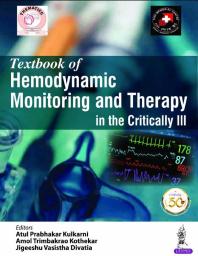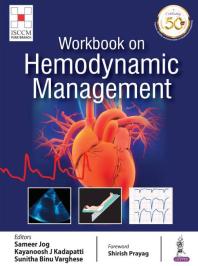
 Textbook of Hemodynamic Monitoring and Therapy in the Critically Ill (2019)
Hemodynamic monitoring offers valuable information on cardiovascular performance in the critically ill, and has become a fundamental tool in the diagnostic approach and in the therapy guidance of those patients presenting with tissue hypoperfusion. including physics and physiology, cardiac output measurement, downstream parameters and others, types of shock, assessing cardiac function, supporting the cardiovascular system, ultrasonography and echocardiography in the critically ill.
Textbook of Hemodynamic Monitoring and Therapy in the Critically Ill (2019)
Hemodynamic monitoring offers valuable information on cardiovascular performance in the critically ill, and has become a fundamental tool in the diagnostic approach and in the therapy guidance of those patients presenting with tissue hypoperfusion. including physics and physiology, cardiac output measurement, downstream parameters and others, types of shock, assessing cardiac function, supporting the cardiovascular system, ultrasonography and echocardiography in the critically ill.
 Workbook on Hemodynamic Management (ISCCM) (2018)
Hemodynamic management should be aimed at minimizing the ischemic injury. Cerebral ischemia impairs the brain's ability to autoregulate its circulation through vasoconstriction and vasodilatation. Therefore, under ischemic conditions, the cerebral blood flow becomes blood pressure-dependent. Hemodynamic management has formed the backbone of Critical Care in the world
Workbook on Hemodynamic Management (ISCCM) (2018)
Hemodynamic management should be aimed at minimizing the ischemic injury. Cerebral ischemia impairs the brain's ability to autoregulate its circulation through vasoconstriction and vasodilatation. Therefore, under ischemic conditions, the cerebral blood flow becomes blood pressure-dependent. Hemodynamic management has formed the backbone of Critical Care in the world

 Fluids and Electrolytes Made Incredibly Easy! (2023)
Step-by-step directions boost your confidence in balancing fluids and electrolytes, understanding fluid imbalances and the disorders that cause them, treating imbalances, and more. Helpful tips throughout reinforce key concepts, provide important care reminders, and strengthen your problem-solving and patient teaching capabilities.
Fluids and Electrolytes Made Incredibly Easy! (2023)
Step-by-step directions boost your confidence in balancing fluids and electrolytes, understanding fluid imbalances and the disorders that cause them, treating imbalances, and more. Helpful tips throughout reinforce key concepts, provide important care reminders, and strengthen your problem-solving and patient teaching capabilities.